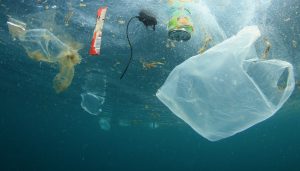Where’s Airborne Plastic? Everywhere, Scientists Find.
Plastic pollution isn’t just fouling the world’s oceans. It is also in the air we breathe, traveling on the wind and drifting down from the skies, according to a new study. More than 1,000 tons of tiny fragments rain down each year on national parks and wilderness areas in the American West alone, equivalent to between 123 million and 300 million plastic bottles worth.
“There’s no nook or cranny on the surface of the earth that won’t have microplastics,” said Janice Brahney, a Utah State University scientist who is lead author on the new study. “It’s really unnerving to think about it.”
While the troublesome presence of plastics in landfills, in the oceans and in freshwater environments like the Great Lakes is well known, research into airborne particles is more recent. Previous papers have described finding airborne microplastics in, among other places, Europe, China and in the Arctic.
The new paper, published Thursday in the journal Science, reports finding plastic in remote parts of the United States; the researchers collected samples from 11 national parks and wilderness areas.
They found tiny bits of plastic in 98 percent of the 339 samples they collected; plastics accounted for 4 percent of the dust particles that were tested.
Finding so much plastic in supposedly pristine areas “was a very surprising result,” Dr. Brahney said; she and her colleagues returned to their calculations again and again, she said, assuming they were wrong. But they weren’t.
The collections were made under both dry conditions and during periods of rain and snow, which helped Dr. Brahney and co-authors, Margaret Hallerud and Eric Heim of Utah State, Maura Hahnenberger of Salt Lake Community College and Suja Sukumaran of Thermo Fisher Scientific, determine the probable origins of the particles. Larger particles came down with rain and snow, while smaller ones showed up under dry conditions.
The microfibers the researchers collected were consistent with the kinds of textiles used in making clothing and in producing carpeting and industrial coatings, as well as outdoor gear like tents and waterproof clothing. That means “emissions from park users may contribute to the observed deposition rates, particularly in national parks with high visitation rates,” though the researchers concluded that those sources did not produce a large portion of the overall samples.
Chelsea M. Rochman, an assistant professor of ecology at the University of Toronto who co-authored an accompanying commentary to the new study, said in an interview that the paper was not the first to show microplastics in atmospheric deposition, or even the atmospheric deposition of microplastics to remote places. But she added that the researchers seemed to be the first to ask through their research, “the basic science question: why and how is this happening.”



